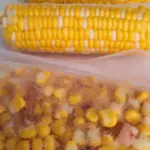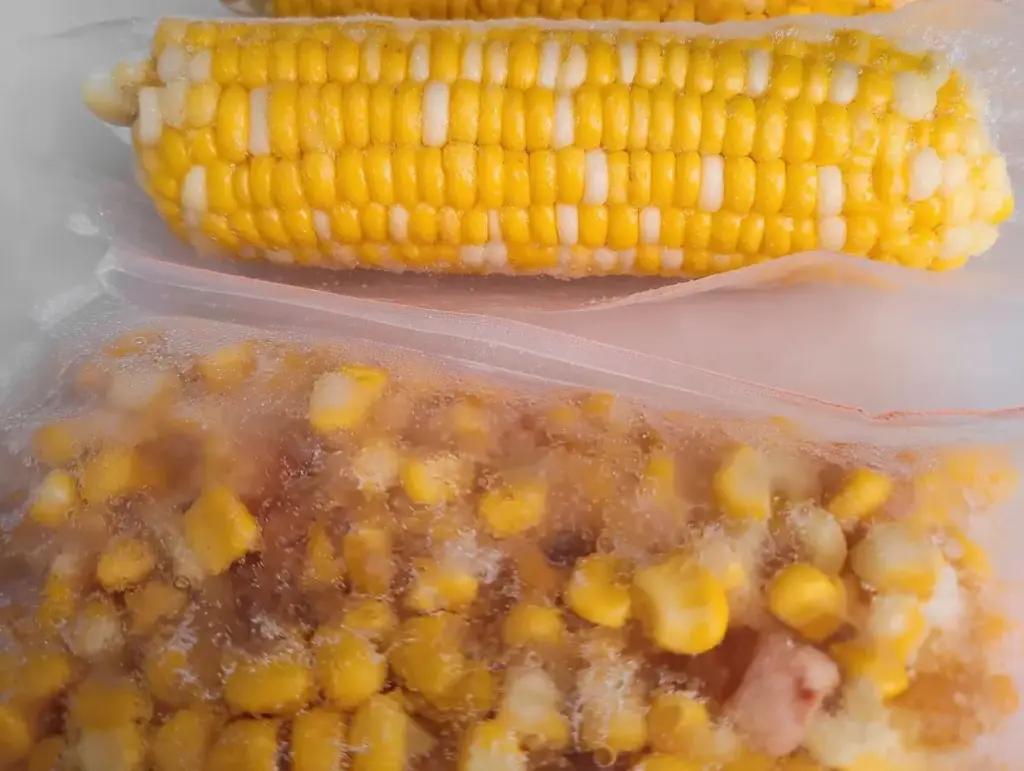Introduction: Why Freeze Corn on the Cob?
As summer approaches and the farmer’s markets burst with vibrant produce, one of the standout stars of the season is undoubtedly sweet corn. Whether you’re biting into a freshly grilled ear at a backyard barbecue or whipping up a hearty corn chowder, the taste of corn can truly elevate any dish. But what happens when the season comes to an end, and you find yourself craving that delicious flavor in the middle of winter? Fear not! Freezing corn on the cob is a fantastic way to preserve that sweet, juicy goodness, ensuring you can enjoy it year-round.
This post is all about the ins and outs of freezing corn on the cob, making it a must-read for home cooks, seasonal food lovers, and anyone looking to make the most of their summer harvest. We’ll walk you through the benefits of freezing corn, including how it retains its flavor and nutrients, and share step-by-step instructions to help you master the process with ease. Plus, we’ll provide tips on how to select the best corn and suggestions for delicious ways to use your frozen treasure once the cold months roll around. Join us as we explore this simple yet rewarding culinary adventure that will keep the taste of summer alive in your kitchen all year long!
Choosing the Best Corn for Freezing
When it comes to freezing corn on the cob, the quality of the corn you choose is essential for achieving the best flavor and texture. Look for corn that is fresh, sweet, and plump. The kernels should be tightly packed, and the husk should be bright green and tightly wrapped around the cob. Avoid any ears that have dry or brown silk, as this can indicate age and lower quality.
Sweet corn varieties are particularly ideal for freezing, as they tend to have a higher sugar content which translates into better flavor when thawed. If you’re shopping at a farmer’s market, don’t hesitate to ask the vendor about when the corn was picked; fresher corn will always yield the best results. If you want to explore freezing other produce, check out our guide on How To Freeze Peaches.
Easy Corn Blanching Techniques
Blanching is a crucial step in the freezing process that helps retain the corn’s bright color, flavor, and nutritional value. Here’s how to do it effectively:
- Prepare the Corn: Start by husking the corn, removing the silk, and breaking off any excess stalk.
- Boil Water: Bring a large pot of water to a rolling boil. The amount of water should be enough to fully submerge the corn.
- Blanch the Corn: Carefully add the corn to the boiling water. Blanching times will vary depending on the size of the ears, but generally, 4-6 minutes is sufficient for medium-sized ears.
- Ice Water Bath: Immediately transfer the corn to a bowl of ice water to stop the cooking process. Leave the corn in the ice bath for the same amount of time you blanched it.
- Drain and Dry: Remove the corn from the ice water and let it drain thoroughly. Pat dry with a towel to remove excess moisture.
Common mistakes to avoid during blanching include overcooking the corn, which can lead to a mushy texture, and not using enough ice in the water bath, which is essential for stopping the cooking process effectively.
How to Freeze Corn on the Cob: Step-by-Step Guide
Now that you’ve blanched your corn, it’s time to freeze it properly. Follow these steps to ensure you preserve its deliciousness:
- Cut the Corn (Optional): If you prefer, you can cut the kernels off the cob for easier storage, though freezing the whole cob is also perfectly fine.
- Package the Corn: Use freezer bags or airtight containers for storage. If using bags, remove as much air as possible before sealing to prevent freezer burn.
- Label Your Packages: Write the date on each bag or container to keep track of freshness. It’s best to use the corn within 6-12 months for optimal taste.
- Store in the Freezer: Place the packed corn in your freezer, ideally in a spot that maintains a consistent temperature.
Avoid overpacking your bags, as this can lead to uneven freezing and potential freezer burn. Make sure to leave space for the corn to expand as it freezes.
Avoiding Common Mistakes When Freezing Corn
To achieve the best results when freezing corn, be aware of the following common mistakes:
- Not Blanching: Skipping the blanching process will result in loss of flavor and color.
- Overpacking Freezer Bags: As mentioned earlier, leave space in the bags for air to circulate.
- Improper Storage Temperatures: Make sure your freezer is set to 0°F (-18°C) or lower to maintain the quality of your corn.
By avoiding these pitfalls, you can ensure your frozen corn remains as delicious as the day it was harvested. Pair your corn with delicious sides like Garlic Parmesan Roasted Brussels Sprouts to create a wholesome meal.
How to Store Frozen Corn on the Cob
Proper storage of your frozen corn is key to maximizing its shelf life and quality. Store your corn in the coldest part of the freezer, away from the door to avoid temperature fluctuations. Ensure that the temperature remains consistently at 0°F (-18°C) or lower. Additionally, it’s essential to keep corn away from strong-smelling foods, as it can absorb odors.
To check for freezer burn, inspect the corn for any dry or discolored patches. While freezer-burned corn is still safe to eat, it may not taste as good, so be mindful of your storage practices.
Delicious Freezer-Friendly Corn Recipes
Once you have your frozen corn ready, the culinary possibilities are endless! Here are a few recipes to inspire your creativity:
- Corn Chowder: A creamy soup that highlights the sweet flavors of corn, perfect for chilly evenings.
- Corn Salad: Combine your frozen corn with fresh vegetables, lime, and cilantro for a refreshing summer dish.
- Corn Fritters: These crispy delights are a fantastic appetizer or side dish that everyone will love.
Try using your frozen corn in a vibrant Mexican Street Corn Coleslaw for a delicious side dish. Your frozen corn can elevate a classic Steakhouse Potato Salad to a new level of flavor.
Nutritional Benefits of Frozen Corn
Frozen corn is not only delicious but also packed with health benefits. It is an excellent source of fiber, vitamins, and minerals, including vitamin C and folate. Studies have shown that freezing preserves the nutritional value of corn effectively, sometimes even better than fresh corn that has been stored for long periods.
When frozen shortly after harvest, corn retains its nutrients, making it a great option for healthy meals during winter months when fresh corn is unavailable. Embrace the benefits of frozen corn for a nutritious addition to your meals!
Frequently Asked Questions
Why should I freeze corn on the cob?
Freezing corn allows you to preserve its sweet flavor and nutritional benefits, giving you access to summer’s bounty all year long.
How do I choose the best corn for freezing?
Look for fresh, sweet, and plump ears with tight husks and bright green silk for the best flavor and texture.
What is the blanching process and why is it important?
Blanching is a quick cooking process that helps preserve the color, flavor, and nutrients of the corn before freezing.
How can I avoid common mistakes when freezing corn?
Ensure you blanch the corn, avoid overpacking bags, and maintain proper freezer temperatures to achieve the best results.
What are some recipes I can make with frozen corn?
Frozen corn is versatile! You can use it in recipes like corn chowder, corn salad, or corn fritters. These recipes enhance the sweet flavor of the corn and are perfect for any meal.
Conclusion: Enjoying Summer Corn All Year Round
Freezing corn on the cob is a simple yet highly effective way to capture the essence of summer and enjoy it throughout the year. By selecting the right corn, properly blanching, and storing it efficiently, you can ensure that your frozen corn maintains its delightful flavor and texture.
We encourage you to embrace the summer corn season by freezing it for later use, allowing you to savor its sweet taste even in the depths of winter. Share your own freezing experiences or ask any questions you may have—we love to hear from our readers!
Print
The Ultimate Guide to Freezing Corn on the Cob: Easy Tips and Techniques
- Total Time: 25
- Yield: 4 servings
- Diet: Vegetarian
Description
Learn how to freeze corn on the cob to preserve its sweet, juicy flavor all year round with this easy guide.
Ingredients
- Sweet corn on the cob (as many ears as desired)
Instructions
- Start by selecting fresh, sweet corn from the market.
- Shuck the corn, removing all husks and silk.
- Fill a large pot with water and bring it to a boil.
- Blanch the corn in boiling water for 4-6 minutes.
- Remove the corn and immediately place it in an ice bath to stop the cooking process.
- Once cooled, drain the corn and pat dry.
- Wrap each ear of corn tightly in plastic wrap or aluminum foil.
- Place the wrapped corn in a freezer bag and remove as much air as possible.
- Label the bag with the date and place it in the freezer.
Notes
- Use fresh corn for the best flavor and texture.
- Make sure to blanch the corn properly to retain flavor and nutrients.
- Frozen corn can last up to 12 months in the freezer.
- Prep Time: 10
- Cook Time: 15
- Category: Sides
- Method: No-Cook
- Cuisine: American
Nutrition
- Serving Size: 1 ear of corn
- Calories: 77
- Sugar: 6 g
- Sodium: 2 mg
- Fat: 1 g
- Saturated Fat: 0 g
- Unsaturated Fat: 0 g
- Trans Fat: 0 g
- Carbohydrates: 17 g
- Fiber: 2 g
- Protein: 3 g
- Cholesterol: 0 mg
Keywords: freezing corn, corn on the cob, summer harvest, food preservation
